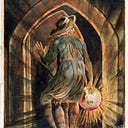Member-only story
Galileo’s “new cosmology”
The Italian Renaissance was a glorious three hundred year period at the end of which Galileo Galilei was born. By that time Europe, and the Catholic Church, in particular, had been through a social maelstrom cumulating in a reactionary inquisition intended to stop further change. An aversion to change was not in Galileo’s chemistry but “ Church leaders” chose to beat an aversion to change into him.
Sidereus Nuncius, usually Sidereal Messenger, also Starry Messenger, is a short astronomical treatise (or pamphlet) published by Galileo on March 13, 1610. It contains the results of his early observations of the imperfect and mountainous Moon, the hundreds of stars that were unable to be seen in either the Milky Way or certain constellations with the naked eye, and the Medicean Stars (later Galilean moons) that appeared to be circling Jupiter, pictured below. In a letter dated 7 January 1610, the first letter describing telescopic observations, Galileo wrote:
“many fixed stars are seen with the spyglass that are not discerned without it; and only this evening I have seen Jupiter accompanied by three fixed stars, totally invisible because of their smallness; and the configuration was in this form”
